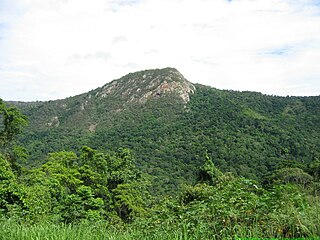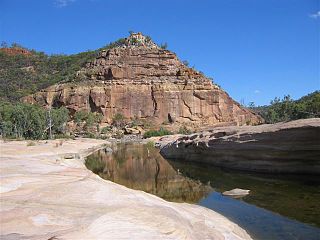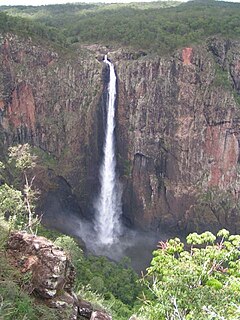| Isla Gorge National Park Queensland | |
|---|---|
IUCN category II (national park) | |
 | |
| Coordinates | 25°10′10″S149°56′42″E / 25.16944°S 149.94500°E Coordinates: 25°10′10″S149°56′42″E / 25.16944°S 149.94500°E |
| Established | 1964 |
| Area | 78.5 km2 (30.3 sq mi) |
| Managing authorities | Queensland Parks and Wildlife Service |
| Website | Isla Gorge National Park |
| See also | Protected areas of Queensland |
Isla Gorge is a national park in Queensland, Australia, 415 km northwest of Brisbane, gazetted in 1964. It contains a rest area with toilets and a camping area, situated along the Leichhardt Highway just south of Theodore.

Queensland is the second-largest and third-most populous state in the Commonwealth of Australia. Situated in the north-east of the country, it is bordered by the Northern Territory, South Australia and New South Wales to the west, south-west and south respectively. To the east, Queensland is bordered by the Coral Sea and Pacific Ocean. To its north is the Torres Strait, with Papua New Guinea located less than 200 km across it from the mainland. The state is the world's sixth-largest sub-national entity, with an area of 1,852,642 square kilometres (715,309 sq mi).

Australia, officially the Commonwealth of Australia, is a sovereign country comprising the mainland of the Australian continent, the island of Tasmania and numerous smaller islands. It is the largest country in Oceania and the world's sixth-largest country by total area. The neighbouring countries are Papua New Guinea, Indonesia and East Timor to the north; the Solomon Islands and Vanuatu to the north-east; and New Zealand to the south-east. The population of 25 million is highly urbanised and heavily concentrated on the eastern seaboard. Australia's capital is Canberra, and its largest city is Sydney. The country's other major metropolitan areas are Melbourne, Brisbane, Perth and Adelaide.

Brisbane is the capital of and the most populated city in the Australian state of Queensland, and the third most populous city in Australia. Brisbane's metropolitan area has a population of 2.5 million, and the South East Queensland region, centred on Brisbane, encompasses a population of more than 3.5 million. The Brisbane central business district stands on the historic European settlement and is situated inside a peninsula of the Brisbane River, about 15 kilometres from its mouth at Moreton Bay. The metropolitan area extends in all directions along the floodplain of the Brisbane River Valley between Moreton Bay and the Great Dividing Range, sprawling across several of Australia's most populous local government areas (LGAs)—most centrally the City of Brisbane, which is by far the most populous LGA in the nation. The demonym of Brisbane is "Brisbanite".
The national park is upon the traditional Aboriginal lands of the Kongabulla Clan of Iman country, [1] the carpet snake people, and Wulli Wulli country. [2]
The north-western section was expanded in 1990 to include the hand-laid rock road which once ran from Rockhampton to Roma as part of the wool run. [3]

















